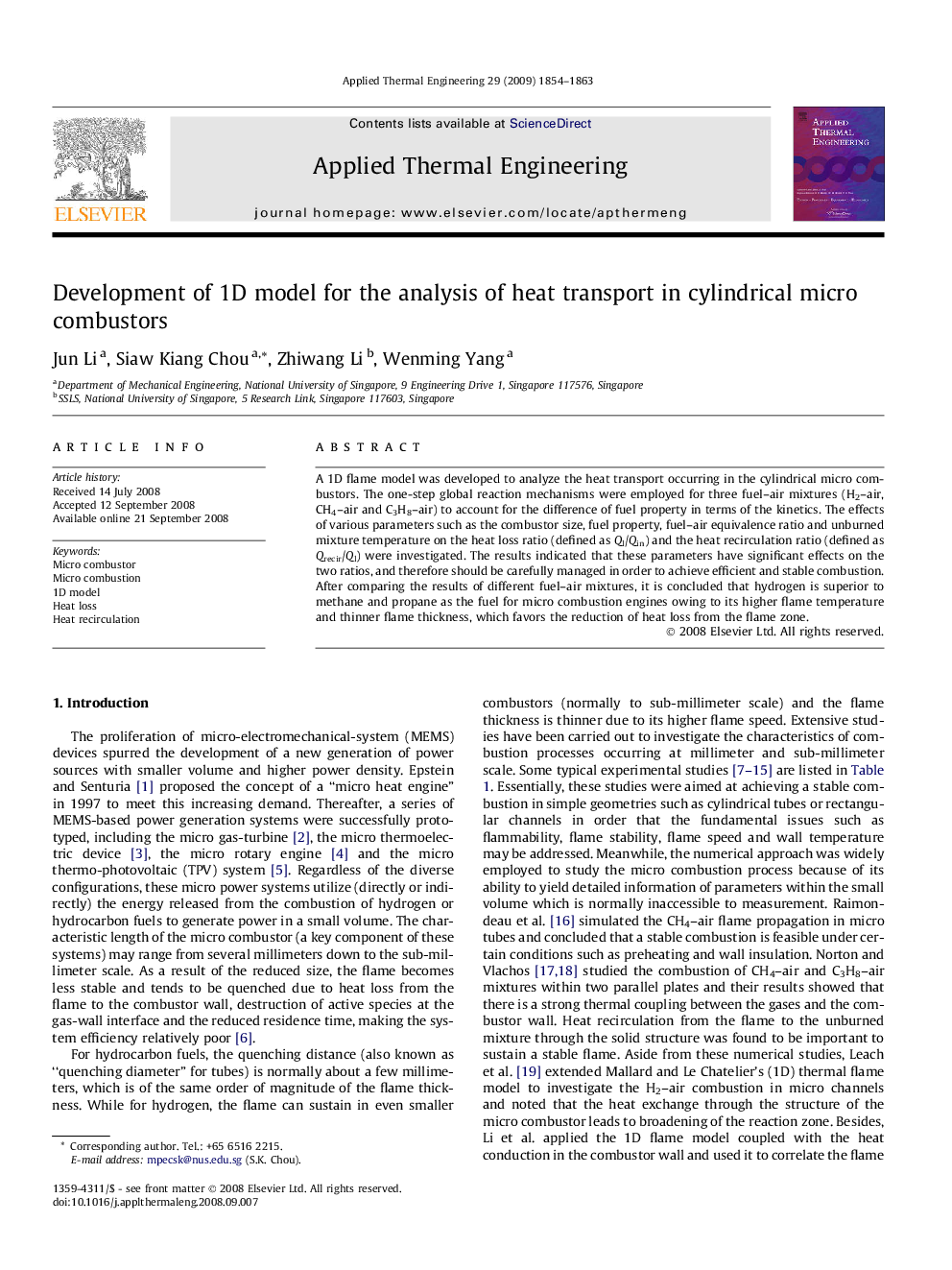| Article ID | Journal | Published Year | Pages | File Type |
|---|---|---|---|---|
| 648755 | Applied Thermal Engineering | 2009 | 10 Pages |
A 1D flame model was developed to analyze the heat transport occurring in the cylindrical micro combustors. The one-step global reaction mechanisms were employed for three fuel–air mixtures (H2–air, CH4–air and C3H8–air) to account for the difference of fuel property in terms of the kinetics. The effects of various parameters such as the combustor size, fuel property, fuel–air equivalence ratio and unburned mixture temperature on the heat loss ratio (defined as Ql/Qin) and the heat recirculation ratio (defined as Qrecir/Ql) were investigated. The results indicated that these parameters have significant effects on the two ratios, and therefore should be carefully managed in order to achieve efficient and stable combustion. After comparing the results of different fuel–air mixtures, it is concluded that hydrogen is superior to methane and propane as the fuel for micro combustion engines owing to its higher flame temperature and thinner flame thickness, which favors the reduction of heat loss from the flame zone.
